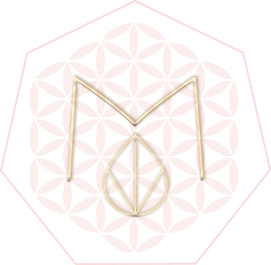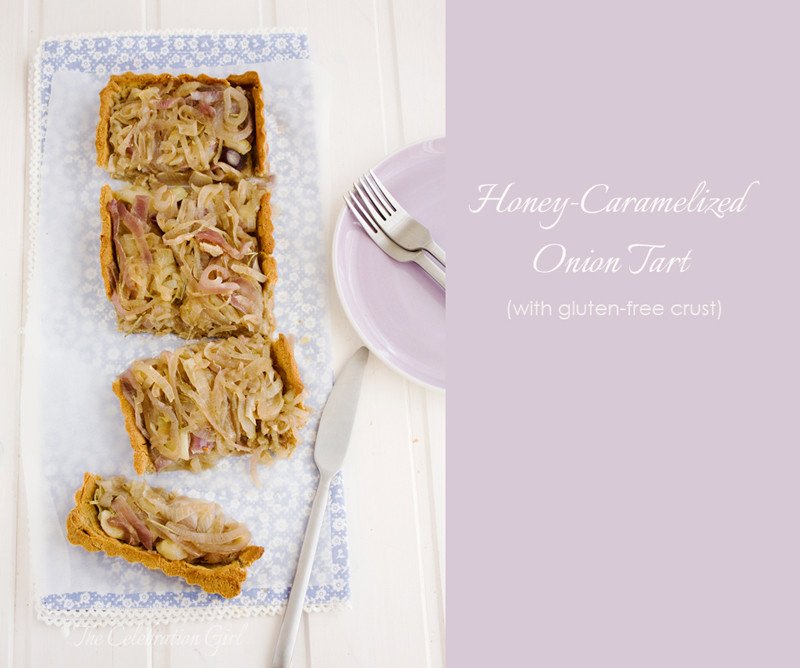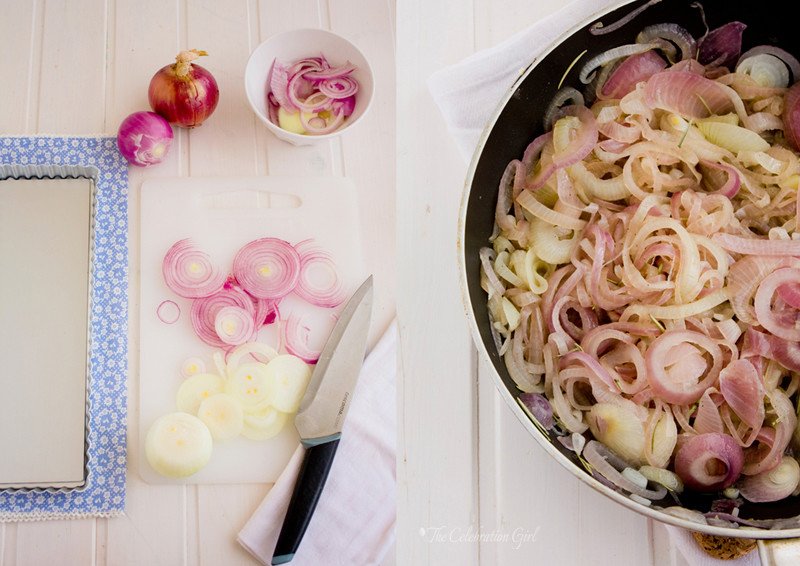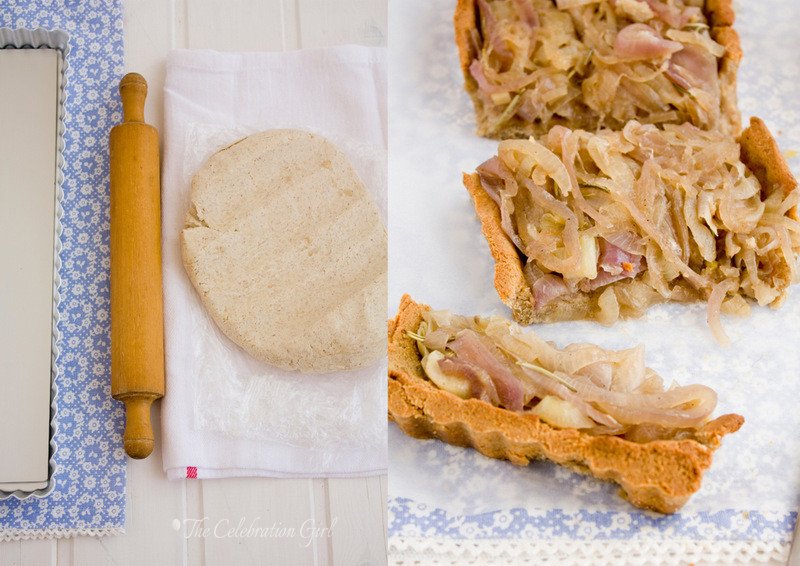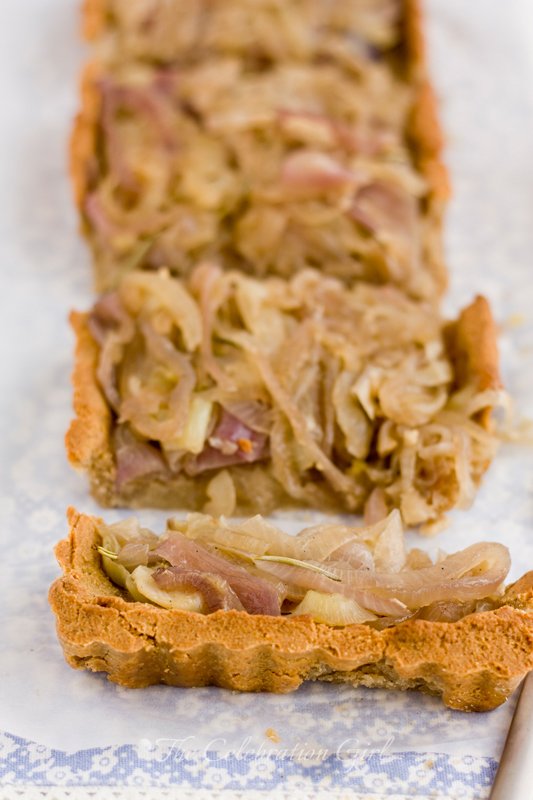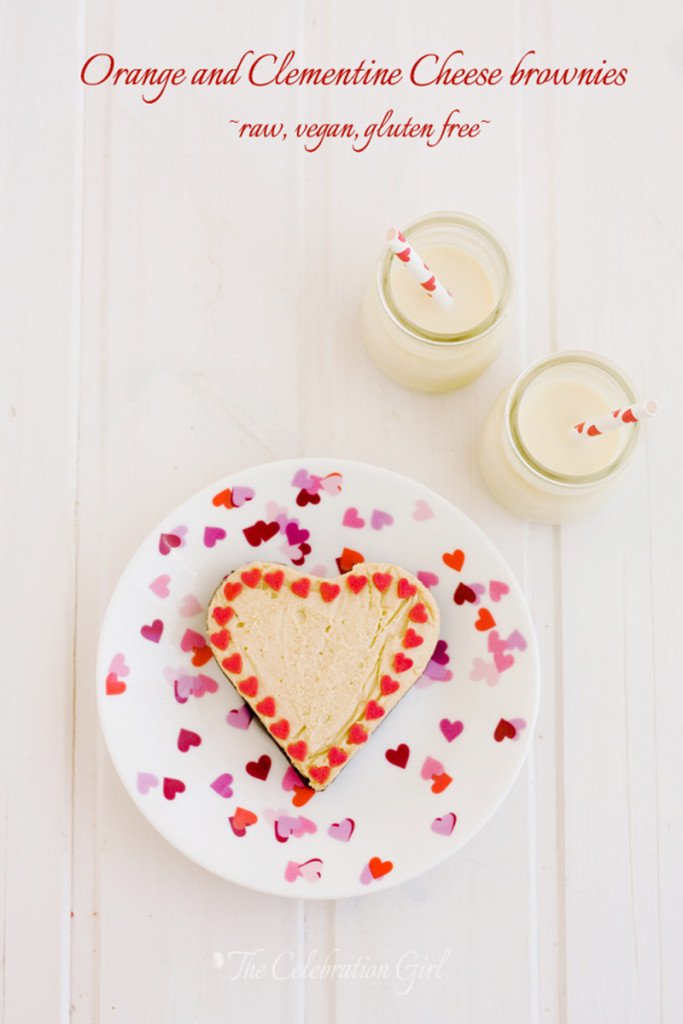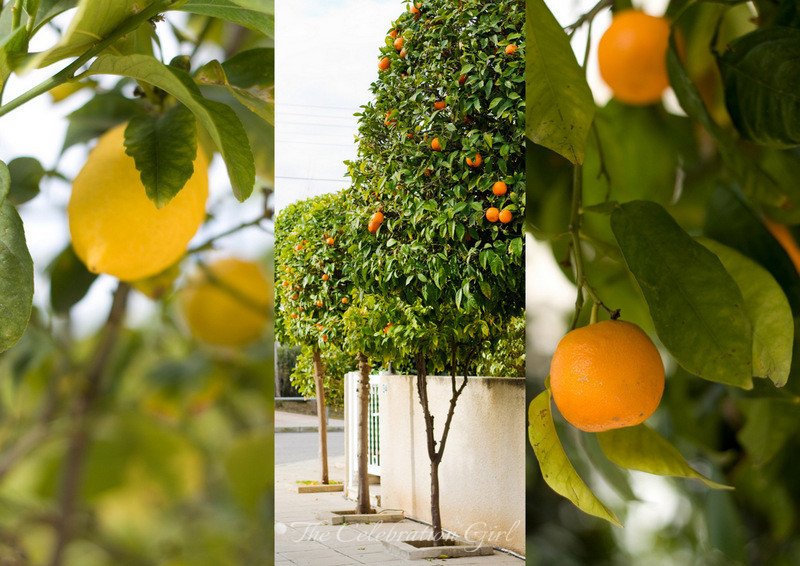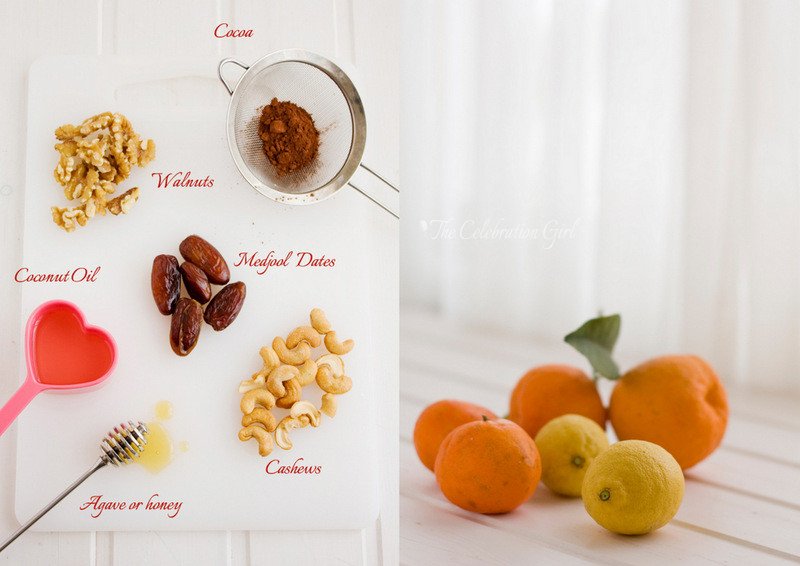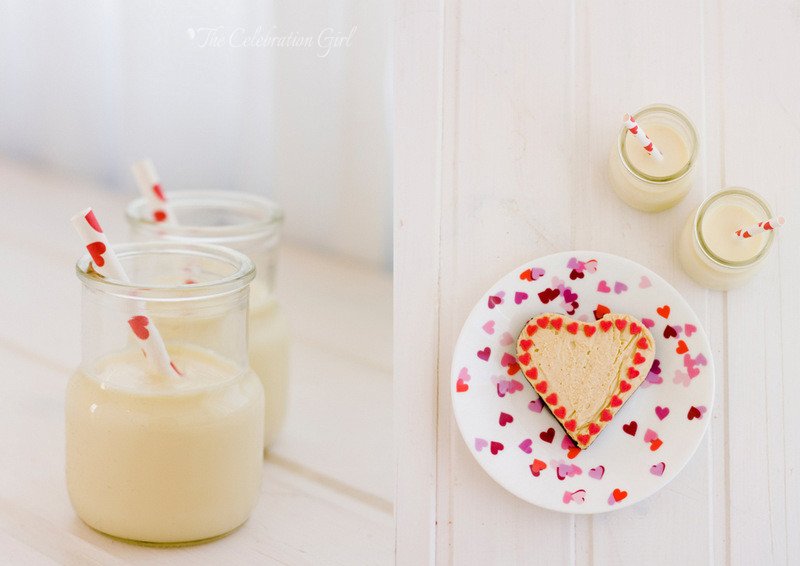Self care, yoga, and a honey-caramelized onion tart (with gluten free crust)
This week was a hectic and intense one, difficult at times, tiring at moments, empowering and happy at others. You know the ones: weeks of mixed emotions, lots to do and little sleep. We all have them, right? I know we do.
Last Tuesday night, after a couple of particularly intense days, I posted on the blog’s facebook page about it, mentioned that I needed chamomille tea to unwind and asked friends to share the strategies that they used to relax during or after difficult times. Most mentioned cooking and baking, some mentioned reading or painting mandalas, having a cup of tea, and sharing times with family or others that they love. I had only mentioned tea in my post, because it is what I was planning to do right away, but the reader’s beautiful responses left me reflecting about my own resources, my own set of grab and go strategies that have helped me during difficult times and the ones that, until today, I had only shared with those who know me well in my personal life, or who have specifically requested my help. Some of those practices (such as baking, watching a selection of my favorite feel good movies like Amélie or silly ones like Zoolander (it always makes me laugh so hard!), having a nice cup of tea) were put in place during happy times and took a whole different meaning during the bad ones; some others I discovered when things were already tough and I was desperately looking for means to stop me from drowning, and have stayed with me, as a core part of my life, ever since. This is the case of meditation and yoga.
The first time I remember hearing about yoga I was 17 years old. Our high school literature professor used to mention that he practiced yoga and meditation and I became curious about them but, back home, back then, yoga was considered an “exotic” discipline and it was not easy to find where to practice. Life continued, time went by, I tried a class at a local gym when I was 21 but run out of money at the end of the first month, and didn’t continue. Then, one day, when I was in the middle of one of the most difficult times in my life, I met the husband of one of my best friend’s on the street and he mentioned that he was going to an amazing yoga class, merely 3 blocks away from my house. I hadn’t thought about yoga in years and I was not looking for a class at the time but I somehow knew it was what I needed. I signed up for the class and fell completely in love with yoga. It was not the asanas, or the pranayams or the meditation…it was all of it together, it was how I felt during the practice but mostly how I felt (as a whole person) after them, the calmness, the peace, the grounding it brought into my life and that I had never experienced before.
I left Argentina the following year, first for Spain and shortly after for Ivory Coast. I bought yoga books and CDs and tried for a while to keep up with a regular home practice, but couldn’t. I didn’t know how, and it always seemed that there was something more important that I just had to do before or that I didn’t feel in quite the right mood…and then, as time went by, I ended up never finding the right time and never getting into the right mood. I knew I needed it, I missed it so much and yet, and yet…there was always an excuse. Excuses are ok under normal circumstances but one thing I discovered during those days is that, when everything around us seems to be falling apart, when are exposed to extreme suffering, poverty, chaos and fear, excuses have the potential to be truly damaging. Excuses, in those circumstances, prevent us from seeking that which we truly need, prevent us from connecting to our bodies, our minds and our souls, from finding the necessary calm and ease that is needed in order to do our work and live our life in a way that is healthy, sustainable and useful for those we are meant to serve. Despite my excuses, I knew I had to change and, by the time I arrived in Cyprus, on 24 December 2007, I was craving yoga. But before I could find a yoga class near my home, I got pregnant with Luka and Zoe and went into bed rest. And then they were born and I couldn’t find the time to attend a class anymore-or anyone to take care of them while I did, for that matter.
Then one day, when browsing the web in search for an article about Indian UN peacekeepers who were teaching yoga to kids in the Iraeli/Lebanese border, I came across Marianne Elliott’s blog, then called Zen Peacekeeping, and I was hooked. I read one blog post after another, feeling a connection that I had rarely felt before with anyone I had read online. There was a person I could identify with, someone who had been through similar experiences and who had come out of them with similar conclusions as myself. Her articles on yoga and body shame, yoga and real life, her whole series on self care , especially her article on why kindness (and not will power) is key to starting a healthy habit, her articles on courage, and even the ones on using twitter for good -and avoiding twitter overwhelm- all rang a bell and said things I wanted to express, better than I ever could.
And Marianne taught online yoga courses for those who, like me, wanted to establish a home yoga practice, but didn’t know how to get started.
I didn’t sign for her courses right away, because I was getting better at finding excuses (I had years of practice by now). Instead, I waited, and waited, and waited until I almost collapsed from anxiety and exhaustion.
I finally signed up after I saw a video when Marianne announced her course on 30 days of yoga for people who are too busy to do yoga. Do you identify with the title? Yes, so did I. I felt that I couldn’t commit to a full 90 minute class, not even to a 45 minute class…but I could commit, I needed to commit to as little as 5 minutes of yoga every day, 5 minutes of self care, 5 minutes just for myself, 5 minutes doing something I loved but had forgotten how to do.
If you are wondering how an online yoga course works, here is how it does now:
Back then, when I first did it, the interface was different, but basically there are videos with the practices (which you can download and keep forever), daily emails, a Facebook group, conference calls, Marianne’s assistance whenever this is needed and, in some cases, a beautiful ebook at the end of the 30 days. Not very different from any other online course you may have done in any other discipline. (What makes the courses different is Marianne’s kindness, but I’ll talk to you about that later).
So I made my commitment to myself, and I started the practices, as sent by Marianne and as recommended by her. The first week, nothing happened. “Where’s the calmness I am supposed to be feeling?????” , I kept thinking, because I was, if anything, more anxious than before. The second week, came the tears. The minute I would step on the rug where I used to practice yoga, I would start crying and I wouldn’t stop until after savasana. The practices were short, 10 minutes only, but something inside of me was being released. I cried all second and third week and then, on the fourth and last week, I started to feel at peace.
I still felt too busy for anything longer, but Marianne’s courses had shown me that I was never too busy to so some yoga and that any yoga was better than none. I had the videos, I had the emails, I had the proof, so I renewed my commitment and maintained my routine, of doing at least 10 minutes of yoga everyday and not beating myself up if that was all the yoga I could do. And it continued to work, to be what I needed. When I felt that I needed some more, I would combine the videos or double the number of sets of each practice. I felt at ease with my routine and I was happy.
Then, at the beginning of 2012, when our world fell apart, and I started feeling again like I had no time to sit on the mat, this time I knew (having practiced long enough the year before) that what I needed was, in fact, the exact opposite: I needed more yoga. So I registered for Marianne’s standard 30 days of yoga course (She also has courses for Beginners and classes of Curvy Yoga) and I committed to 45 minutes practices, 4 times a week.
Why am I talking to you about yoga and my experience today? Why am I talking to you about Marianne? Because this year I want to share with you everything that is good in my life, all the resources that have worked for me in the past, and that continue to support me in many ways. I wanted to share this with you so that you could get to know Marianne and her work, which I greatly admire . More importantly, I want to share Marianne’s courses with you because they have supported not only me, but also my children, who love the short routines of Busy Yoga and practice them on their own (please turn off the volume if you don’t to hear Luka and me singing Elmo’s songs while Zoe practices yoga in the video). I want to share her courses with you because they are the only ones to which I have been able to commit consistently and for a long period of time, and I want to do it because I know how important this can be and what a difference it can make to one’s life.
I want to share this with you because I know how easy it is to fall off the self care wagon and how damaging this can be. I want to share Marianne’s courses with you because, after I fell off, I needed a course rooted on kindness towards myself and others to get back on track, and because this may be your case too.
I wanted to share this with you today because Marianne’s latest edition of her yoga courses start tomorrow and I will be in them, again, and because it occurred to me that, perhaps, you may need something like what she offers, and you would like to join me there as well. And finally, I wanted to share this with you today to let you know that I know how it feels to let go of our good habits, to struggle to keep up with what is good for us, but that is never too late to get back on track.
Please, share with me in the comments below: which practices are essential to your well being? Do you also struggle to find time for them?
Now, while we talk, let’s cook something yummy, shall we?
I made this tart a couple of weeks ago, on one of those lovely early Spring days that are so beautiful in Cyprus. Last December, my husband bought me Aran Goyoaga’s new book, Small Plates and Sweet Treats: My Family’s Journey to Gluten-Free Cooking, (which is one of the most beautiful cook books that I have ever seen) and I started looking forward to experimenting with gluten free cooking. I was so eager to start trying her recipes that, on the day of our wedding anniversary (January 26th), we traded our traditional fondant au chocolat, for Aran’s Almond butter, chocolate and beet molten cakes -and I believe these will be our new anniversary staple dessert.
I was a little bit scared of gluten free savory food, so it took me a while longer to begin experimenting with the small plates part of the book. I can find my way pretty easily around desserts and I have a natural instinct for knowing how to adapt sweet recipes, but I can’t really say the same about tart crusts, crackers, breads and other savory food. But I felt encouraged by the molten cakes’ success and I decided to try to make this tart (which is a classic at my home) with a gluten free & vegan crust (adapted from the one in Aran’s Zucchini,quinoa and goat cheese tart, if you have the book)
The preparation of the crust is fairly simple, but it takes a bit of time, because it has to be chilled twice and cooked for quite some time. I must also confess that, when I saw its texture, I freaked out: It felt like clay! I went ahead and put it in the oven because of how much I admire Aran’s work, but it was honestly a leap of faith- I was convinced I had made a mistake along the way and that it was going to turn out absolutely inedible. Fortunately for me, my fears were unfounded, based only on my lack of knowledge of gluten free cooking, and the crust turned out to be delicious. More importantly, this crust and the molten cakes got me hooked on experimenting with different flours (it’s so creative!), so you can expect more gluten free recipes in the future.
One word of caution regarding this crust, before leaving you with the recipe: You will want to respect the refrigerating times and make sure that it cooks well before adding the onion. The crust is delicious if it’s crispy but not so much if it isn’t, so bake it long enough before adding the filling to make sure that the bottom is crispy as well. Remember that, once you add the onion filling, the baking times are very reduced, so the crust will need to be ready before this happens or it will turn soggy. And we don’t want that to happen!
Now without further ado, here is the recipe:
Honey-caramelized onion tart, with gluten free crust
Ingredients:
For the crust: 60 grs buckwheat flour, 70 grs hazelnut flour, 140 grs quinoa flour, 140 grs brown rice flour, 1 teaspoon nutmeg, salt to taste, 120 ml olive oil, 250 ml cold water.
For the filling: 3 red onions, 3 yellow onions, 2 tablespoons honey, 2 tablespoons warm water, 1 tablespoon rosemary or thyme, vegetable oil of your choice.
Preparation:
1- Prepare the crust: Put all flours in the food processor and pulse a few times to air them. Add nutmeg, salt, olive oil and cold water and pulse until the dough comes together. Remove from the food processor, wrap it in foil and place in the refrigerator to chill for 1/2 hour.
2- Remove the dough from the refrigerator, and roll it on the counter (previously dusted with your favorite gluten free flour). Cover your desired tart mold with it, pinch it with a fork and place it in the refrigerator for another 30 minutes.
3- Pre heat the oven at 200C. Remove the tart mold from the refrigerator, cover with baking paper and add pie weights or dry beans (I used alubia beans) so that the dough doesn’t rise much in the oven. Bake the crust for 20 minutes.
4- Remove the beans or weights and continue baking for another 20 minutes, until golden. When ready, remove the crust from the oven and let it chill, but leave the oven on.
5- Prepare the filling: Peel and slice the onions. Put 3 tablespoons of oil in a frying pan and sautée the onions in it. Add rosemary, salt and pepper and let cook for about 5 minutes. Once the onions are tender and start to turn golden, add the honey (which must be liquid), mixed with two tablespoons of warm water. Stir and let it simmer for another 5 minutes.
6- Add the onion filling to the crust and place the tart again in the hot oven, for a final 5 minutes. Serve hot.
Have a beautiful week!
